
Admiral of the Blue Edward Boscawen, PC was a British Admiral in the Royal Navy and Member of Parliament for the borough of Truro, Cornwall. He is known principally for his various naval commands during the 18th century and the engagements that he won, including the siege of Louisburg in 1758 and Battle of Lagos in 1759. He is also remembered as the officer who signed the warrant authorising the execution of Admiral John Byng in 1757, for failing to engage the enemy at the Battle of Minorca (1756). In his political role, he served as a Member of Parliament for Truro from 1742 until his death although due to almost constant naval employment he seems not to have been particularly active. He also served as one of the Lords Commissioners of the Admiralty on the Board of Admiralty from 1751 and as a member of the Privy Council from 1758 until his death in 1761.

USS Intrepid (CV/CVA/CVS-11), also known as The Fighting "I", is one of 24 Essex-class aircraft carriers built during World War II for the United States Navy. She is the fourth US Navy ship to bear the name. Commissioned in August 1943, Intrepid participated in several campaigns in the Pacific Theater of Operations, including the Battle of Leyte Gulf.
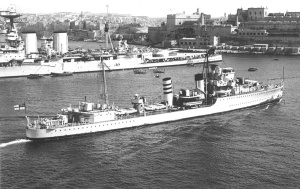
HMS Inglefield was an I-class destroyer leader built for the Royal Navy that served during World War II. She was the navy's last purpose-built flotilla leader. She was named after the 19th century Admiral Sir Edward Augustus Inglefield (1820–1894), and is so far the only warship to carry the name of that seafaring family. In May 1940, her pennant number was changed to I02.

HMS Intrepid (L11) was one of two Fearless-class amphibious warfare ships of the Royal Navy. A landing platform dock (LPD), she served from 1967 until 1999. Based in HM Naval Base, Devonport, Plymouth, Devon and HM Naval Base Portsmouth, she saw service around the world over her 32-year life.
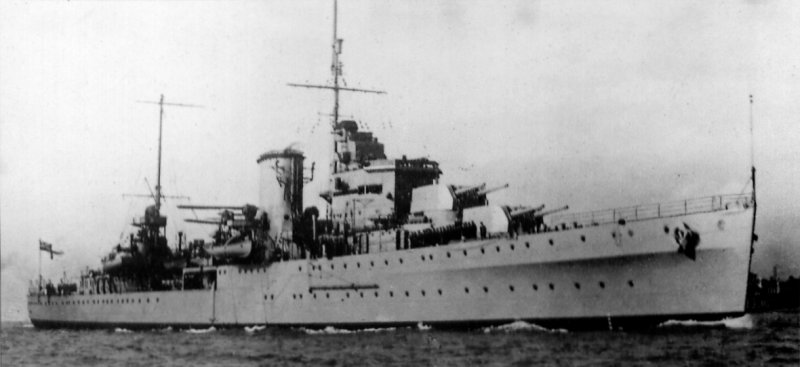
HMS Ajax was a Leander-class light cruiser which served with the Royal Navy during World War II. She became famous for her part in the Battle of the River Plate, the Battle of Crete, the Battle of Malta and as a supply escort in the siege of Tobruk. This ship was the eighth in the Royal Navy to bear the name. In February 1942, she was adopted by the civil community of Halifax.

HMS Africa was a 64-gun third-rate ship of the line of the Royal Navy, launched by Barnard at Deptford on 11 April 1781.
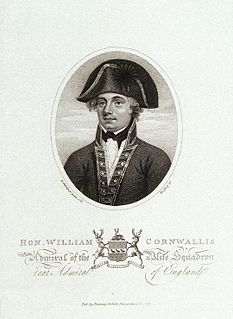
Admiral of the Red Sir William Cornwallis, was a Royal Navy officer. He was the brother of Charles Cornwallis, the 1st Marquess Cornwallis, British commander at the siege of Yorktown. Cornwallis took part in a number of decisive battles including the siege of Louisbourg in 1758, when he was 14, and the Battle of the Saintes but is best known as a friend of Lord Nelson and as the commander-in-chief of the Channel Fleet during the Napoleonic Wars. He is depicted in the Horatio Hornblower novel, Hornblower and the Hotspur.

HMS Caroline is a decommissioned C-class light cruiser of the Royal Navy that saw combat service in the First World War and served as an administrative centre in the Second World War. Caroline was launched and commissioned in 1914. At the time of her decommissioning in 2011 she was the second-oldest ship in Royal Navy service, after HMS Victory. She served as a static headquarters and training ship for the Royal Naval Reserve, based in Alexandra Dock, Belfast, Northern Ireland, for the later stages of her career. She was converted into a museum ship. From October 2016 she underwent inspection and repairs to her hull at Harland and Wolff and opened to the public on 1 July 2017 at Alexandra Dock in the Titanic Quarter in Belfast.

HMS Sussex was one of the London sub-class of the County-class heavy cruisers in the Royal Navy. She was laid down by R. and W. Hawthorn, Leslie and Company, Limited, at Hebburn-on-Tyne on 1 February 1927, launched on 22 February 1928 and completed on 19 March 1929.

HMS Britannia was a 120-gun first-rate ship-of-the-line of the Royal Navy, laid down in 1813 and launched on 20 October 1820.
John Elliot was a Scottish officer of the Royal Navy who served during the Seven Years' War and the American War of Independence. He rose to the rank of admiral, and served briefly as colonial governor of Newfoundland.

HMS Victoria was the last British wooden first-rate three-decked ship of the line commissioned for sea service.

Lieutenant Commander Roger Percival Hill, DSO, DSC, was a commander in many famous destroyers of the Royal Navy during the Second World War. Hill served in crucial theatres of the war, being present in the Arctic convoys, the Mediterranean Campaign and Malta Convoys, as well as playing a supporting role aboard HMS Jervis during the Normandy landings.
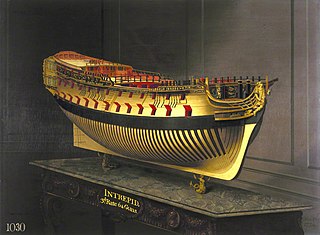
HMS Intrepid was a 64-gun third-rate ship of the line of the Royal Navy, launched on 4 December 1770 at Woolwich. She was sold in 1828.

Couronne was a Téméraire class 74-gun ship of the line of the French Navy.

HMS Esk was an E-class destroyer built for the Royal Navy in the early 1930s. She was designed to be easily converted into a fast minelayer by removing some guns and her torpedo tubes. Although assigned to the Home Fleet upon completion, the ship was attached to the Mediterranean Fleet in 1935–36, during the Abyssinia Crisis. During the Spanish Civil War of 1936–1939, she spent considerable time in Spanish waters, enforcing the arms blockade imposed by Britain and France on both sides of the conflict. Esk was converted to a minelayer when World War II began in September 1939, and spent most of her time laying mines. During the Norwegian Campaign of April–June 1940, the ship laid mines in Norwegian territorial waters before the Germans invaded, but was recalled to home waters to resume her minelaying duties in early May. During one such sortie, Esk was sunk during the Texel Disaster on the night of 31 August 1940, when she ran into a newly laid German minefield.
Anthony James Pye Molloy was an officer of the Royal Navy. He served during the American War of Independence and the French Revolutionary Wars.

The action of 29 April 1758 was a naval engagement fought in the Bay of Biscay near Brest between a British Royal Navy squadron and a single French Navy ship of the line during the Seven Years' War. In an attempt to support the garrison of Louisbourg, who were facing an impending siege, the French Atlantic Fleet sent a number of squadrons and ships to sea during the spring of 1758. To intercept these ships, Royal Navy squadrons maintained a close blockade of their main port at Brest. In April a British squadron including HMS Intrepid, HMS Dorsetshire and HMS Achilles was cruising off the French Biscay Coast when a lone sail was sighted to the southwest. Dorsetshire, commanded by Captain Peter Denis was sent to investigate, discovering the ship to be the French ship of the line Raisonnable sailing to Louisbourg. In a fierce battle, Dorsetshire managed to inflict heavy casualties on the French ship and force her captain, Louis-Armand-Constantin de Rohan, to surrender.
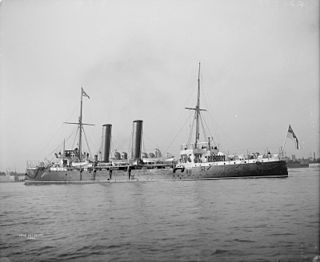
HMS Intrepid was an Apollo-class protected cruiser of the Royal Navy built on the River Clyde and launched in 1891. She was subsequently converted as a minelayer and sunk as a blockship during the Zeebrugge Raid on 23 April 1918.

HMS Intrepid was a 64-gun third rate ship of the line of the Royal Navy, originally built in Toulon for the French Navy. She was launched in 1740, as Sérieux and fought at the Battle of Toulon before her capture by the British at the First Battle of Cape Finisterre in 1747. After being renamed and refitted by the Royal Navy, she entered British service in late 1747. Between 1748 and 1752 she was assigned as a guard ship off the coast of Kent in south-east England.

















